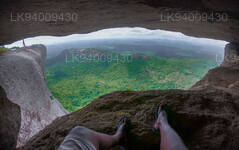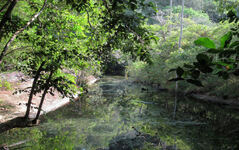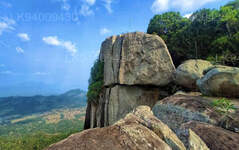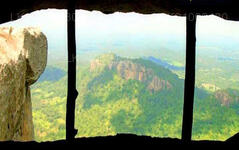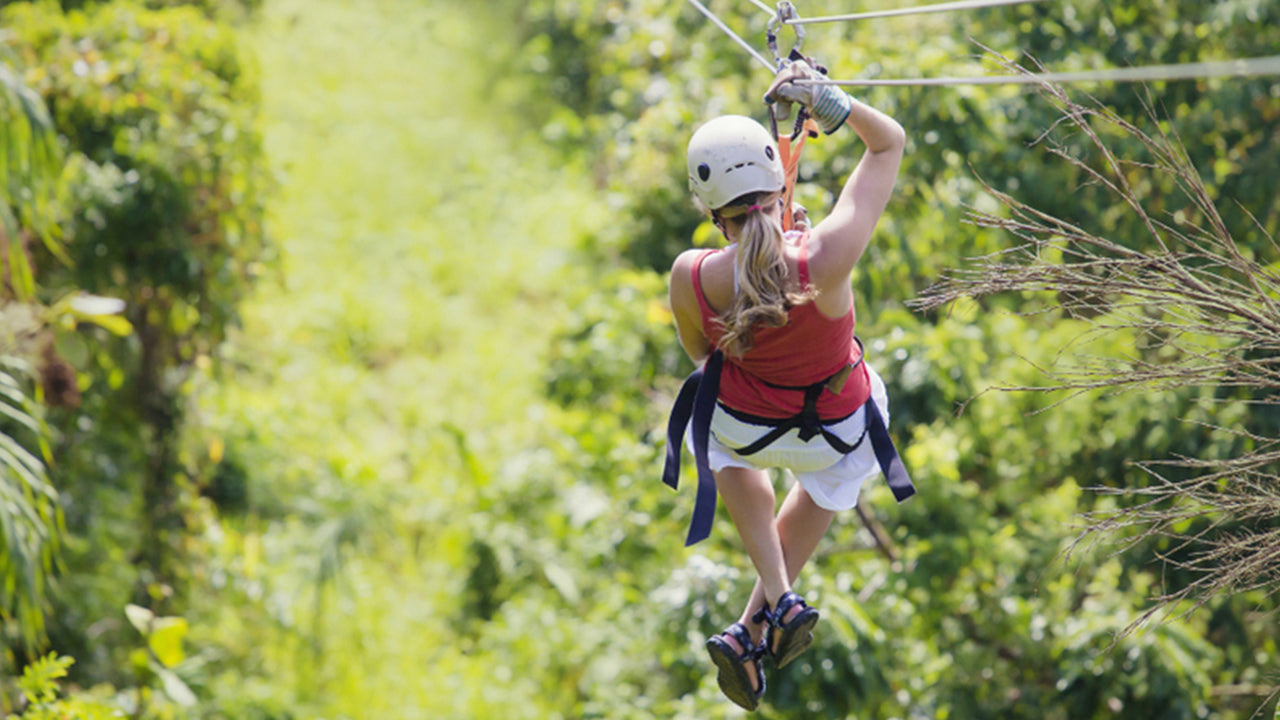
Kurunegala City
Kurunegala: Bustling city in Sri Lanka's North Western Province, featuring historic sites, vibrant markets, and a blend of modern and traditional culture.
Dolukanda
Dolukanda is a well known mountain range due to the Dolukanda Raja Maha Viharaya (Dolukanda Buddhist Temple) and it is believed that the mountain is directly linked to the great Indian epic, Ramayana Trail in Sri Lanka . In Ramayana story this mountain declared as Dolukada Sanjeewani mountain.This is one of the five Sanjeevani drops in Sri Lanka which located in Kurunegala District. This is one of the popular Ramayana sites of Sri Lanka , where it is believed that the parts of Himalaya Mountain have been felt while it was carried to Sri Lanka by Hanuman.
There is ample evidence that 5,000 years before, the great sages in the history of the Hela were perfect in the medical and post-medical fields and that they maintained great medicinal gardens. Here is a special note about Dolukakanda, the herbal garden of King Buddhadasa Veda, who is known as the great Vedic teacher who is talked about in the history of the Hela
How to get to DolukandaDolukanda Mountain lies in the Kurunegala District of the North Western Province. There are two routes to Dolukanda. One is to take the Dambulla Road from the Muththettugala Junction to the Wellawa Ganewatta Road and proceed to the Dolukanda Temple. Then you can start the Dolukanda climb from the temple.
The other route is to take the Kurunegala-Dambulla road to Ibbagamuwa and from there take the Madagalla road and get off at Godagala junction. Then you can travel through the village of Doluwa to Dolukanda through a beautiful paddy field.
Dolukanda is considered to be the site of Lord Weeramunda and is a place of historical and archaeological value. Dolukanda which is designated as a reserve is under the Forest Department. It is important that you climb Dolukanda with a special permit from the Forest Department. It is also important to inform the Thero of the Dolukanda Temple as the Dolukanda Climb should start through the Dolukanda Temple. You will also find a guide to climb Dolukanda.
While climbing Dolukanda you will see a lot of gum on the way. There are also huge russet trees and large herbaceous plants. Among these are rare herbs called Gardi Raja. It is noteworthy that the herb grows on another plant. At the same time, the black stone ruins can be seen along the way as evidence that there were buildings. Many treasures can be seen being destroyed by thieves.
Along the way, there are gushing springs that overflow the roots of the rocky outcrop. That water is even suitable for drinking. If you go up and run out of water you can get water from this spring. This is because there is no drinking water at the top of Dolukanda.
There is a place called Maligathenna at the top of Dolukanda and it is a great place to see the beauty of the surroundings as a plain. Maligathenna is believed to be the back part of the palace at the top of Dolukanda. Maligathenna is also mentioned as the road used by King Walagamba to worship at the Dolukanda temple.
Once you reach the top of Dolukanda, you can see the beauty of the North Western Province. On one side you can see Kurunegala, Wariyapola and on the other side, you can see Wellawa, Deduru Oya, Yakdessagala mountain. The beach up to Chilaw can be seen on a clear day.
There are several water bodies at the top of Dolukanda. According to the villagers, the ponds are medicinal ponds and have black water and the ponds are deeper. Surrounded by majestic trees, these ponds are thought to have medicinal properties.
History of DolukandaMany pieces of evidence have been found that Dolukanda was the medicinal garden of King Buddhadasa. History has it that he was an amazing king who amazed the world with his Hela medicine. It states that King Buddhadasa treated people as well as animals.
There is another story to be read about the history of Dolukanda Mountain. According to the story of Ramayana, Rama's doctors ask Hanuman to go to the Himalayan forest and bring a medicinal plant to heal Rama's wound. After going to the Himalayas, Hanuma is unable to identify the herb and the story goes that the part where he is believed to have the herb came up a whole mountain. It is said that the mountain was brought down from the sky and several sections of the road fell into Lankapura, Sri Lanka. That is, Ritigala, Dolukanda, and Rumassala are said to be the parts of the mountain that contained the herbs. This story is being commercialized today. Many tours bring these stories to the attention of various places in Sri Lanka. But evidence now suggests that there is some doubt about this story. We kindly ask you to look at this logically.
Many places in Sri Lanka have become World Heritage Sites due to the biodiversity of those places. Many of the animals, plants, and many other things found in Sri Lanka are endemic to Sri Lanka. Evidence has also been found that there were great sages and great Vedic teachers who maintained herbal gardens in Lankapura, Sri Lanka, even before the above story was written. Ritigala is a good example of this. We kindly ask you to study these facts very intelligently.
Dolukanda CaveAt the top of Dolukanda, there is a forest cave where the monks meditated and lived. It can be thought of as a natural location.
Learn before you go Dolukanda- It is dangerous to bathe in the water pools at the top of Dolukanda.
- Carry as much water as you need.
- Definitely inform the Thero of the Dolukanda Temple and go up Dolukanda.
- As the winds are high, be careful when going to the top of the mountain and going to the edge of the rock plateau
About Kurunegala District
Kurunegala is the capital of the Wayamba Province in Sri Lanka and the Kurunegala District.Kurunegala was a royal capital for only 50 years, from the end of the 13th century to the start of the next, though even before this it was strategically placed in the middle of other majestic strongholds such as Yapahuwa to the north, Dambadeniya to the south and Panduwasnuwara in the east. Ethagala a rock reaching 316 meters, towers over the town, which is located at an altitude of 116 meters above sea level. The shape of Ethagala resembles an Elephant. A transport hub, it has a railway station, and several main roads linking important parts of the country.Kurunegala is situated about 94 km from Colombo, and 42 km from Kandy.
Most of Kurunegala's residents belong to the Sinhalese majority. Other ethnic minorities include the Sri Lankan Moors, Sri Lankan Tamils, Burghers and Malays. Residents from ethnic minorities live in all parts of the city, however, sizeable communities of Moors and Tamils also live in the areas of Teliyagonna and Wilgoda.
About North Western Province
North Western Province is a province of Sri Lanka. The districts of Kurunegala and Puttalam formulate North Western or Wayamba. Its capital is Kurunegala, which has a population of 28,571. The province is known mainly for its numerous coconut plantations. Other main towns in this province are Chilaw (24,712) and Puttalam (45,661), which are both small fishing towns. The majority of the population of Wayamba province is of Sinhalese ethnicity. There is also a substantial Sri Lankan Moor minority around Puttalam and Sri Lankan Tamils in Udappu and Munneswaram. Fishing, prawn farming and rubber tree plantations are other prominent industries of the region. The province has an area of 7,888 km² and a population of 2,184,136 (2005 calculation).
Wayamba is the third largest paddy producing area in Sri Lanka .Wayamba has a highly developed agricultural economy, growing a variety of fruits and vegetables, flowering plants, spices, oil-seeds in addition to the traditional plantation crops such as Coconut, Rubber and Rice. Rich soils and varied climate give Wayamba a potential for growing of virtually any crop.
In Wayamba or North western province, home for ancient Buddhist rock temples, magnificent citadels Panduwasnuwara, Dambadeniya, Yapahuwa and Kurunegala. Impressive remains of those citadels, palaces, Buddhist temples and monasteries provide exciting sight seeing to the visitors.
【Text by Lakpura™. Images by Google, copyright(s) reserved by original authors.】



